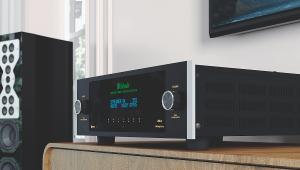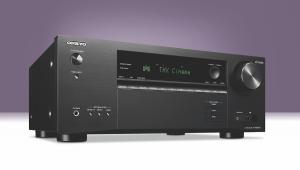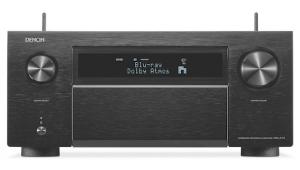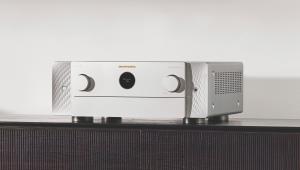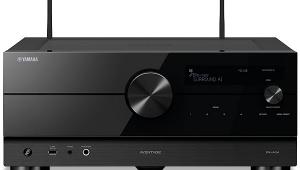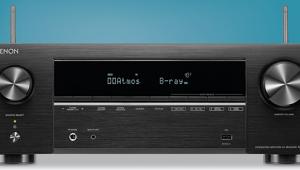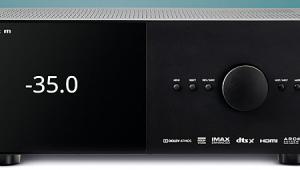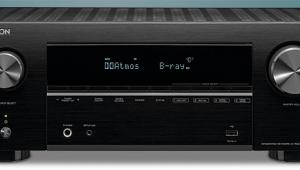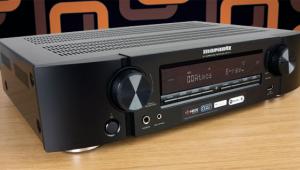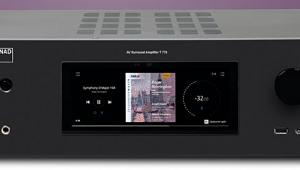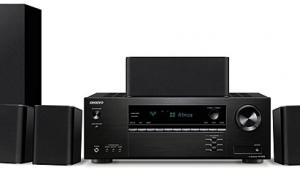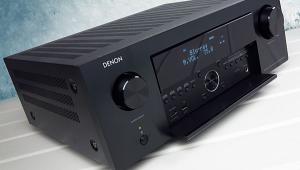Pioneer SC-LX85 review
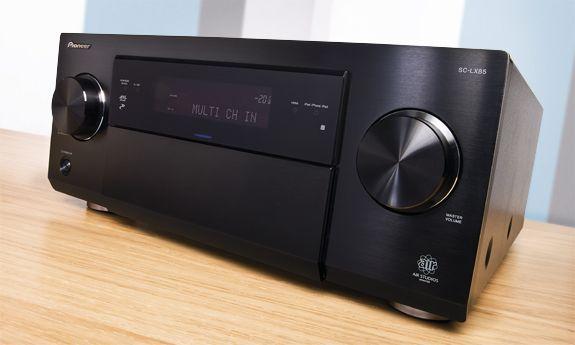
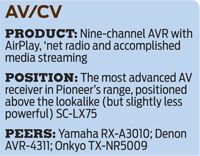
The SC-LX85 is the latest in a lauded line of high-performance AV receivers from Pioneer. It’s ostensibly a replacement for the award-winning SC-LX83, which implies a casual revamp, but it arrives casting a longer, more regal shadow. This is a sumptuous, powerhouse of a receiver – but that’s not so say it doesn’t occasionally drop the ball.
Build quality is excellent. The SC-LX85 is suitably heavy (tipping the scales at around 18kg) and sports a rigid, unflexing chassis. It’s black, naturally, but the fascia detail is quietly classy, with metallic trim on the input and volume dials adding a little sparkle.
The back plate is packed but logical. The sheer number of inputs guarantees even complex systems users will find ingress. There are seven HDMI inputs alone (including one on the front panel), all of which are 3D and ARC (Audio Return Channel) compliant. You get twin outputs, too.
Feature face-offNew since the SC-LX83 is a feature dubbed HDMI Standby Through, which routes the output from any connected source, be it Sky+HD, VirginMedia TiVo or Freeview HD, straight through to your TV without any need to engage the receiver. Given that partners tend to dislike powering up a home cinema system just to keep one eye on Celebrity Big Brother, this immediately makes it a more accommodating domestic appliance. You’ll probably find your electricity bills dropping as well.
The AVR ships with a well-made, backlit RF remote control – considerably nicer than the button-strewn IR zapper supplied lower down the Pioneer ranks. Many of you may choose to keep this in its box, though because, as with most of the brand’s AV products, the SC-LX85 can be controlled quite smartly via its iControlAV2 app, which is designed for both tablet and smartphone use, and for Apple and Android devices. My colleague Richard Stevenson swears by it – but I’m still a handset kinda guy.
Get streamingWhen it comes to other feature additions, the inclusion of Apple AirPlay is also big news. If you’re an Apple user, the ability to stream your iTunes music library direct from a Mac or PC, or push songs from your iPad or iOS mobile, will be a welcome trick. The SC-LX85 can also charge an iPad direct from its front fascia digital connection. Not all AVRs have the electrical cojones to do this.
Not an Apple user? The receiver can act as a DLNA renderer, allowing you to push music from an Android phone or tablet, using an appropriate DLNA app.
Kudos also to Pioneer’s H.M.G (Home Media Gallery), which pretty much sets the bar when it comes to network music streaming. H.M.G. is compatible with all popular file formats, including MP3, WMA, WAV, AAC, FLAC and Ogg; it also displays album art when available from music stored on PCs or NAS devices.
Bizarrely, this wealth of file support doesn’t extend to playback from USB. Load up music from an attached stick and FLAC, Ogg and AAC files are all deemed by the SC-LX85 to be unreadable. Given that it’s usually network playback which is less versatile, this is a curious (and unwanted) anomaly.
Of course, all this networking functionality does highlight one key shortcoming of the SC-LX85. It doesn’t offer built-in Wi-Fi. To get around that, Pioneer is bundling a Wi-Fi adaptor in the box, the AS-WL300, but it’s a nasty, clunky widget that’s unnecessarily difficult to use (oh, for the simplicity of a plug and play TV-style USB Wi-Fi dongle). When planning your install, make sure you have a LAN connection available.
Powerhouse performance

So how does the SC-LX85 actually sound? In a word: thrilling. This receiver combines huge dynamic power with a nuanced delivery and precise steerage.
Driving this daisy are nine channels (the SC-LX85 offers height/width processing if that’s your bag) of audiophile-grade Class D (ICEpower Energy HD) amplification, rated by Pioneer at 190W into 6Ohms. This is the fourth generation of high-end Class D from the brand, and I reckon it’s got audiophile digital amplification down to a fine art. Should you ever need it – you won’t – Pioneer quotes 810W of continuous power over nine channels (the step-down SC-LX75 offers 720W). By any measure, that’s an avalanche of sound.
A fair degree of the amp’s refinement must be down to the painstaking tuning process conducted at London’s respected AIR Studios; it’s at this point the engineers find ever more ingenious ways of injecting analogue sweetness into its digital heart.
The SC-LX85 is also THX Ultra 2 Plus certified. There is an ongoing debate about the value of THX post-processing, but I’ve always enjoyed the warm homogeny that it brings to soundtracks. Of course, there are exceptions, particularly Blu-rays mixed with home theatre in mind, but these are the exception rather than the rule. I’d rate THX Ultra 2 Plus post-processing a must-have for cineastes.
For all its complexity, getting the SC-LX85 setup is relatively straightforward, thanks to the brand’s MCACC room calibration system. Using the supplied plug-in mic, it takes just a few minutes to equalise levels, correct phase and make a stab at correcting any acoustical room nasties, such as standing waves.
An additional facet of this alchemy is a video adjustment feature, with filters preset to match differing display technologies. If you use an LED TV, plasma or have a projection system, data acquired by the MCACC capture process is used to manipulate picture enhancement and levels of noise reduction. There’s also a Streaming Video Adjustment, but this proves to be ineffective and is best left off. Using standard test patterns, it was clear that with the latter feature engaged, fine vertical details were lost rather than enhanced. I’m certain that wasn’t the intention of Pioneer’s boffins...
Speed demonSonically, this receiver is fast. One of the beautiful things about ICEpower amplification is its ability to deliver rapid, powerful transients. Explosions hit hard and fast, with a dynamic retort just not heard on lesser kit. The AVR also plays very loud without stress or distortion. Running at about -15dB from reference (any more than that and it was just too loud in my listening room), performance is agile, musical and exciting.
I found familiar blockbusters given fresh energy by Pioneer’s flagship. Dial up the ‘First Sortie’ chapter on James Cameron’s Avatar (Blu-ray, DTS-HD Master Audio), and you’ll be immersed in a soundstage every bit as deep and textured as the film's stereoscopic imagery: be sure to luxuriate in the wraparound jungle ambiance, before Jake Sully takes flight from a high volume predator. The sequence concludes when the entire 360-degree soundstage is submerged. It’s a dramatic, enthralling listening experience.
Massive musicalityAs you’d expect for an AVR costing £2,000, the SC-LX85 is equally at home with multichannel music as it is surround sound movies, making it a natural partner for your Super Audio CDs. A DSD mode allows you to pour multichannel audio straight over HDMI, and it sounds wonderful.
The jazzy MOR of Emi Fujita (Camile Best Audio, Japanese import) beats with breathy life; the receiver offers astounding mid-range clarity which allows the singer’s band to image convincingly around her. Detail and positioning is excellent.
To further improve audio performance over HDMI, the receiver offers PQLS jitter reduction for all sources (multichannel, bitstream and LPCM). This requires a matching PQLS-enabled Blu-ray player in order to eliminate timing errors. Unfortunately, Pioneer just doesn’t have a BD deck of the calibre of this receiver in its current range (and I wouldn’t bet on one arriving, either); consequently I suspect enthusiasts will be partnering the thing with other branded models, and so this embellishment will go unappreciated. I auditioned it with Pioneer’s PQLS-friendly BDP-LX54 Blu-ray player, before replacing it with the superior Cambridge Audio Azur 751BD.
The SC-LX85 refines other features seen on previous models. One intriguing attraction is Phase Control Plus. The idea is that you can improve the tonal balance of Blu-ray content by manually correcting LFE delays which may have been created during the encoding process. Quite how you work out if there are any erroneous delays in walloping big explosions remains to be seen – but it could be fun to try.
More usable is the basic Phase Control mode, which cleverly ensures that even wildly disparate speakers share the same timbre, for pitch-perfect sound panning.
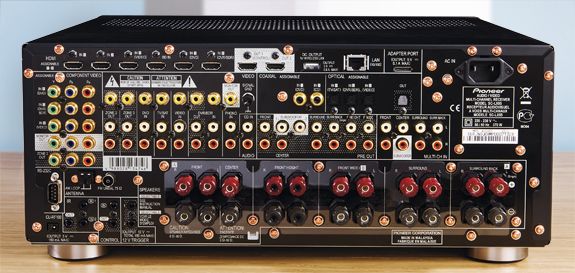
The SC-LX85 is hands down the most exciting and exhilarating AV receiver I’ve auditioned over the past year; a top-flight product that genuinely pushes the traditional home theatre envelope, and is both extremely well built and generously equipped.
In truth, Pioneer’s range-topper doesn’t get everything right – the wireless LAN adaptor is an abomination and its crippled USB file support annoying – but ultimately these foibles fade in the face of its sonic prowess. When a piece of kit sends a chill of excitement down your spine every time you turn it on, you know it’s really rather special.
HCC VERDICT
Pioneer SC-LX85
Price: £2,000 Approx
Highs: Powerful, precise multichannel sound; excellent LAN music streaming; AirPlay; THX Ultra2 Plus post-processing
Lows: Clunky Wi-Fi adaptor; media support from USB not as comprehensive as across a network
Performance: 5/5
Design: 5/5
Features: 5/5
Overall: 5/5
Analysis
GUI: Onscreen menus are slick – as is the iPad app controller
Power consumption: In 5.1 mode at a reasonable listening level, we measured an average power consumption of 130W
Killer feature: Apart from its formidable amplification, the SC-LX85’s networking prowess (not from USB, though) is first-rate
Specifications
Dolby Digital TrueHD: yes
DTS-HD Master Audio: yes
THX: yes THX Ultra 2 Plus
Multichannel audio: yes 9 x 190W
Multichannel input: yes
Multiroom: yes two stereo zones, audio only
AV inputs: 5 x digital audio inputs (3 x optical and 2 x coaxial), 4 x phono AV inputs
HDMI: yes 7-in, 2-out, v1.4a
Video upscaling: yes to 1080p
Component input/output: yes 3-in, 2-out
Dimensions: 435(w) x 185.6(h) x 440.3(d)mm
Weight: 17.9kg
Features: 2 x USB; Ethernet; pre-amp outputs; Bluetooth adaptor port; iPod/iPad support (with 2.1A battery charge facility) via USB; DLNA v1.5; internet radio; USB port for flash drives; FM radio; MCACC auto-calibration via microphone; Phase Control; Air Sound Retriever; height/width processing; Bi-amp option; RS-232C; IR output; 2x 12V trigger
 |
Home Cinema Choice #351 is on sale now, featuring: Samsung S95D flagship OLED TV; Ascendo loudspeakers; Pioneer VSA-LX805 AV receiver; UST projector roundup; 2024’s summer movies; Conan 4K; and more
|





